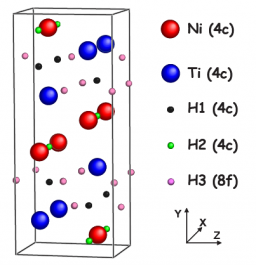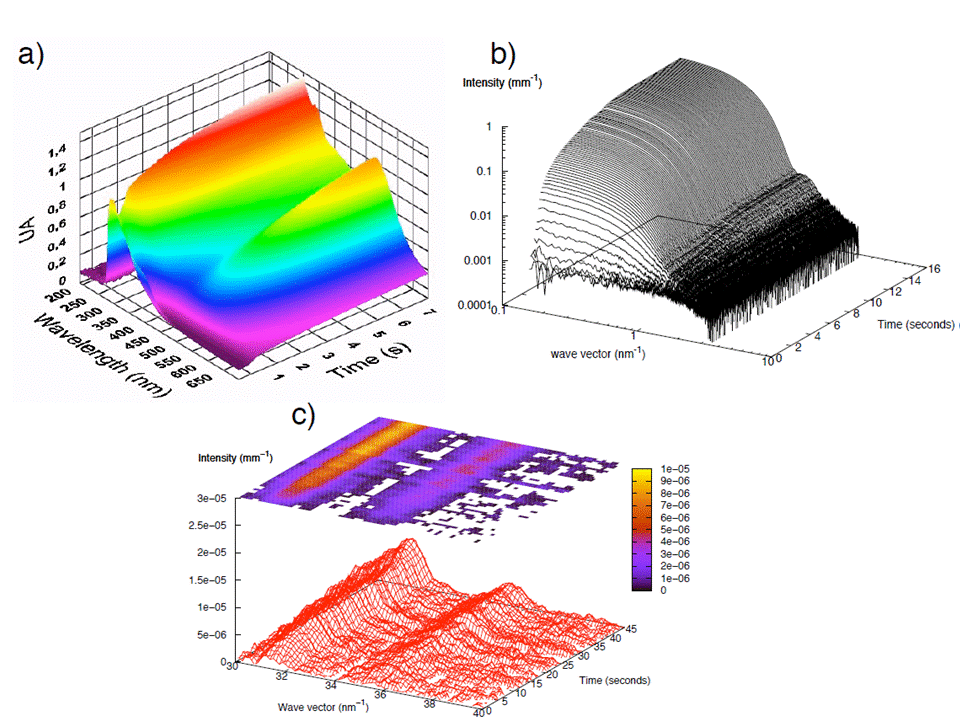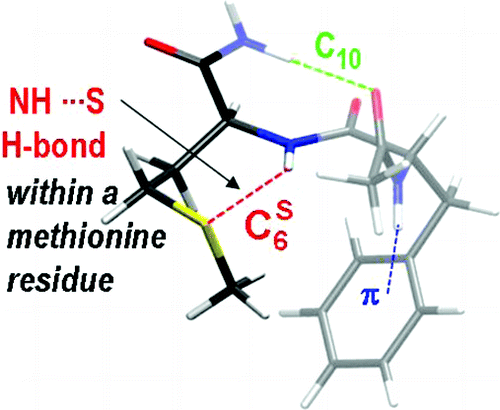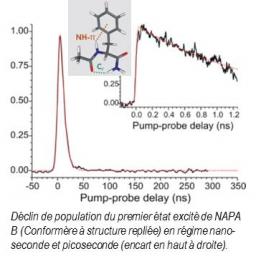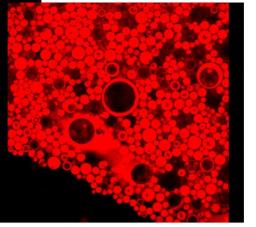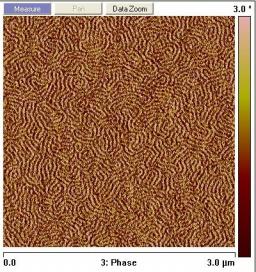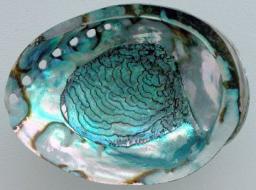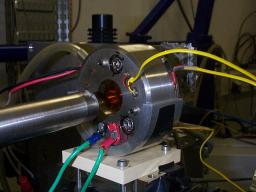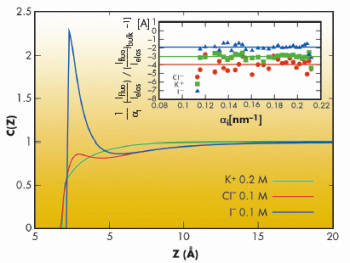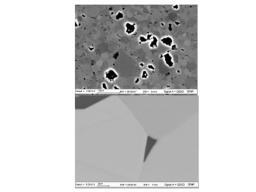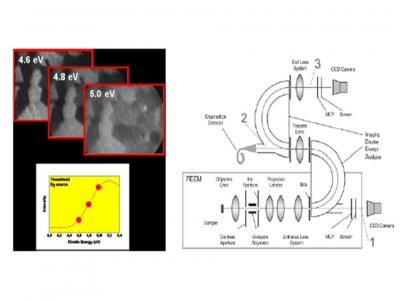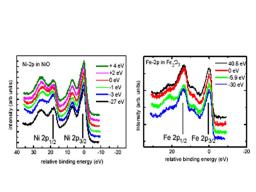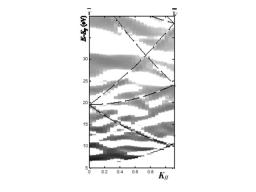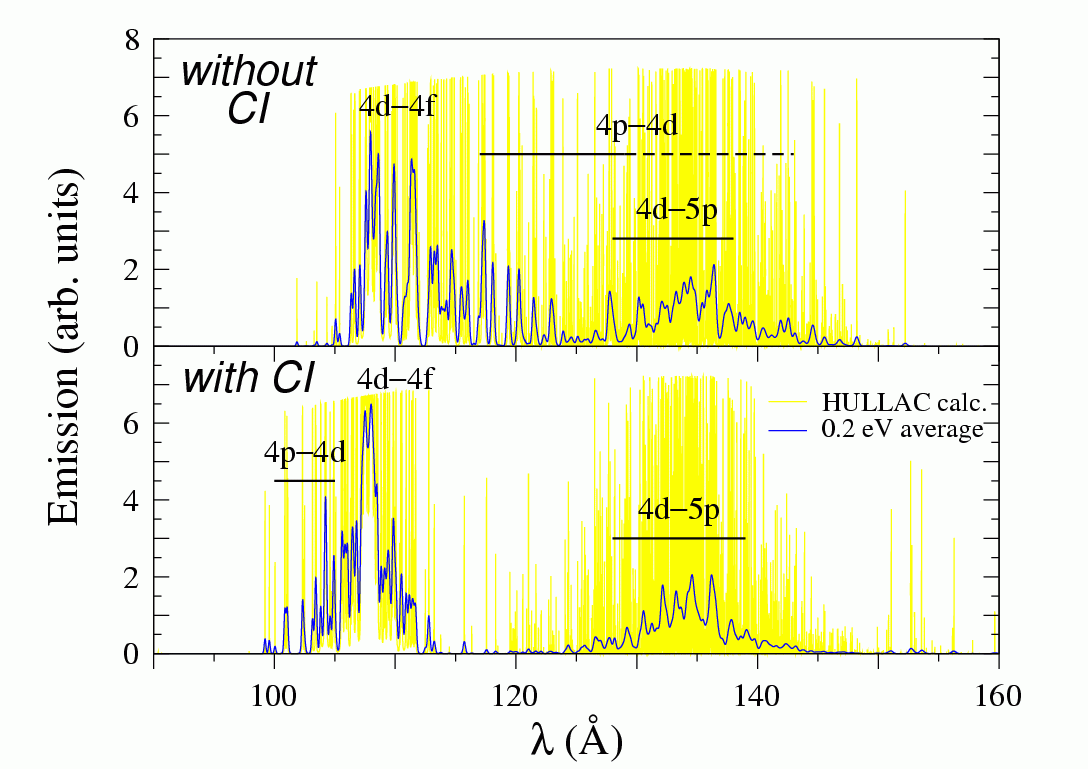Pages scientifiques 2008
Nous avons réalisé l'étude de la réponse de cellules ostéoblastiques (MC3T3) à des irradiations contrôlées et ciblées à l'aide du dispositif d'irradiation ion par ion. Cette étude apporte un nouveau regard sur l'effet de voisinage (plus connu sous l'appellation bystander effect), dont l'origine est ici double: signalisation membranaire et mitochondriale. Jusqu'à présent, l'effet bystander était en général évoqué pour expliquer l'apparition d'effets délétères dans des cellules non directement ciblées. Ici, outre cette observation, nous avons également fait apparaitre un effet d'amplification dans les cellules cibles elles-mêmes: ainsi, pour une dose par cellule identique, la réponse à l'irradiation (évaluée par différents marqueurs de l'irradiation comme l'apparition de micronoyaux) est considérablement augmentée quand les cellules voisines sont elles-mêmes irradiées. Il faut donc dans notre cas élargir ainsi le concept de l'effet bystander également aux cellules cibles.
TiNi alloy is polymorphic. It exhibits a martensitic transition near room temperature between a cubic CsCl-type (austenite) and a monoclinic TiNi-type (martensite) structure. This transformation is at the origin of its shape memory effect. In addition, TiNi has good hydrogen storage properties under normal conditions of pressure and temperature. In austenic form, TiNi absorbs 1.4 H/f.u. under atmospheric pressure. No plateau is observed in the pressure composition isotherm curve (PCI) showing that hydrogen is absorbed in solid solution [1]. Hydrogenation properties of the martensite form are unknown. By adjusting a partial substitution of Ti by Zr and by using different elaboration techniques (melt spinning and induction melting), we were able to stabilize the two different crystallographic forms at room temperature for the same composition: Ti0.64Zr0.36Ni. The austenitic phase exhibits hydrogenation properties close to those of cubic TiNi. The martensitic phase absorbs up to 2.8 H/f.u. and shows a pressure plateau ranging between 1 and 2.5 H/u.f.. This plateau indicates the presence of two hydride phases in equilibrium. These results lead to the conclusion that hydrogenation properties of TiNi-type alloy are strongly influenced by the structural polymorphism [2] of the parent alloy. (more...)
General objectives
We aim at understanding the microscopic mechanisms controlling the formation of nanoparticles. Different types of NPs are studied in the LIONS and among them gold NPs have already been the subject of several achieved PhD (B. Abécassis and F. Hubert) and on-going in-house studies (J. Han) and collaborative ones (S. Gomez from the Univiersity og Vigo). Our general approach is to consider that quantitative kinetic measurements of the size, size distribution and number of NPs with time together with the gold atoms speciation in solution (Au(III), Au(I) and Au-0)) can serve as a basis to develop a better understanding of the mechanisms involved.
The nucleation and growth mechanism of gold nanoparticles are followed at the millisecond time scale using different in situ techniques. Three different systems are presently studied : nanospheres in toluene (NST), nanorods in water (GNR) and nanospheres in water (NSW). The time scale range from one second (NSW) to 600 seconds (GNR). The sample environment are adapted to the time-scale involved. They are (i) a stopped for the most rapid synthesis, (ii) an home-made millifuidic set-up for water rapid systems and (iii) a simple flow through cell for the GNRs.
Three main synchrotron based techniques are used, SAXS WAXS and XANES both with a high time resolution. ESRF (ID02) and SOLEIL (SWING and ODE) have been intensively used to acquire a unique set of data during the nucleation and growth of these objects.
Cette thématique phare du groupe vise à collecter des données structurales précises en phase gazeuse afin d’étalonner la modélisation des interactions moléculaires contrôlant la structure des biomolécules.
Les atouts du groupe sont ici la maîtrise d'expériences en phase gazeuse, (désorption par laser, jet supersonique et méthodes de spectroscopie optiques laser à plusieurs couleurs, UV et IR) et le développement poussé de l’interface entre expérience et théorie (modélisation des structures et spectres IR par chimie quantique, modélisation des processus en détente supersonique, validation des nouveaux outils théoriques pour la description des systèmes complexes).
Il s’agit ici d’aborder une question cruciale pour les systèmes biologiques, à savoir celle du lien entre structure (conformation, environnement), et dynamique (réactivité, relaxation).
Cette thématique est en prise directe avec les propriétés des protéines, vis-à-vis du devenir de l’excitation électronique consécutive à l’absorption d’un photon dans le proche UV. Les états excités de longue durée de vie laissent le temps à des réactions chimiques de se produire, conduisant à des dommages structurels susceptibles d’affecter la fonction biologique du système. Or, de manière générale, les molécules du vivant présentent des états excités de courte durée de vie, court-circuitant ainsi les phénomènes dommageables : ce sont ces phénomènes élémentaires contrôlant la durée de vie de l’état excité qui sont ciblés dans ces études. Il s’agit ici de :
- caractériser expérimentalement les durées de vie en fonction des espèces étudiées (expériences de type pompe-sonde), ainsi que la cascade d’états formés,
- modéliser les processus mis en jeu, notamment le rôle joué, pour la relaxation, par les intersections coniques avec des états excités de plus basse énergie.
See the PhD position opened in 2014 about this subject
http://iramis.cea.fr/Pisp/patrick.guenoun/Greenmembranes.html
Phase separation of polymer solution, induced by an abrupt quench in temperature, leads to a macroscopic segregation of phases. The growth of the phases and the associated structures when time elapses since the beginning of the quench are still badly known for hydrosoluble polymer solutions. However phase separation processes are widely used in manufacturing polymeric material like gels or membranes
Mastering the temperature-induced morphology and porosity needs to fully understand how phase separation proceeds and to establish the relationship between phase separation mechanism and processing parameters during material preparation.
For some years, we studied a neutral hydrosoluble polymer the poly(N-isopropylacrylamide) or PNIPAM. When aqueous solutions of this polymer are heated above a temperature of the order of 42°C, a phase separation occurs. However the PNIPAM does not follow the macroscopic phase separation. The phase separation stops at a stage where it leads to porous stable PNIPAM colloids (spheres having size of the order of 200 nm). A probable mechanism, consistent with the colloidal size variation with temperature, is that the phase separation is blocked at an early stage (Cahn regime of spinodal decomposition) by adsorption of residual ions at the grain’s surface.
Our ultimate goal is now to make membrane manufacturing safer and more economic on atoms by using modified natural polymers like cellulose ethers and water as the only solvent, thus lowering wastes and recycling. Consolidation of the film structure is carried out by cross-linking. On the basis of their relevance for membrane preparation and accessible phase boundaries, the biocompatible and neutral polymer selected is the hydroxypropyl cellulose (HPC). Aqueous hydroxypropyl cellulose is a fascinating system which exhibits an isotropic phase in dilute solutions, but forms an ordered liquid crystalline phase with cholesteric structure in concentrated solutions at room temperature. As PNIPAM the HPC has a lower critical solution temperature (LCST) close to room temperature and it undergoes reversible phase separation upon heating. Phase diagrams of HPC solutions will be established and bulk phase separations will be studied to determine what kind of bicontinuous phases are obtained as a function of the temperature, concentration and time. The characterization will be done in a large concentration range in order to change the topologies of the predominant phase (in volume) rich in polymer or in solvent. Phase diagrams and bulk phase separations of HPC solutions will be studied by varying the physico-chemical parameters: degree of polymerization and polydispersity.
The boundaries of the phase diagrams (cloud points) are determined by turbidity measurements. The morphologies and the growth laws with time of phases are established using scattering techniques (Neutron, Light, XRay), Diffusive Wave Spectroscopy, Optical and Confocal Microscopies (see Figure 1).
Quantitative models will be proposed to rationalize the phase separation processes in order to provide roadmaps for membrane manufacturing.
La stabilisation d’émulsions (hors d’équilibre) ou de microémulsions (à l’équilibre thermodynamique) est un processus industriel d’importance mais qui suscite toujours de nouveaux développements fondamentaux liés notamment à la recherche de tensioactifs plus performants ou à une meilleure compréhension des mécanismes d’inversion.
Les tensioactifs ‘‘sophistiqués’’ que nous avons utilisé ont vu le jour grâce à des synthèses chimiques originales comme des copolymères réalisés par polymérisation radicalaire vivante à l’ESPCI (PS-PDAEMA) ou par polymérisation anionique sous vide (laboratoire de J. Mays, Knoxville) ou encore des nanoparticules greffées avec des ligands idoines. Ce sont souvent des objets stimulables qui s’intègrent dans un objectif général de modulation des propriétés en fonction de paramètres extérieurs facilement accessibles (température, pH, ajout de sel...). Ces mêmes molécules ou nanoparticules ont bénéficié pour la plupart d’études en film unique présentées ici ou dans la fiche ‘‘Interfaces’’, ce qui permet d’enrichir la compréhension des émulsions en tant qu’auto-assemblage de films flexibles. Enfin, des techniques alliant le suivi, parfois cinétique, dans l’espace direct et dans l’espace réciproque ont été utilisées.
Des micro-émulsions peuvent être stabilisées à l’aide de copolymères biséquencés neutres-chargés qui jouent alors le rôle de tensioactifs dont les deux parties hydrophiles et hydrophobes sont aisément modulables par construction ou ajout de sel. C’est notamment possible en utilisant des copolymères seuls qui forment des micelles gonflées [1] par un bon solvant du coeur hydrophobe et ce d’autant plus que les deux séquences sont plus équilibrées. Par contre, si l’on se sert des mêmes copolymères comme additif à une microémulsion bicontinue stabilisée par des tensioactifs courts de type CiEj, on obtient alors un ‘‘boosting’’ de la microémulsion. Comme montré Figure 3, l’ajout de copolymère permet à la phase microémulsion de gonfler en incorporant de l’huile et eau supplémentaires et l’utilisation de copolymères chargés nous a permis d’atteindre des facteurs de boosting deux fois plus grands que ceux rapportés jusqu’alors dans la littérature comme en témoigne la teinte blanche de la phase du milieu, au centre de la Figure 1. En fonction de la température, on peut varier le gonflement qui est plus ou moins important et symétrique. Une explication possible est liée à l’accroissement de la rigidité de courbure du film par l’ajout de copolymère pour une courbure spontanée du film proche de zéro.
The majority of electronic devices is designed on silicon wafers where the architecture of the different layers is made through lithographic techniques and resin masks. To cope with the desired increase in performance (Moore’s law), the structure size has to be reduced in order to integrate a larger number of components. Lithographic techniques then reach limits (pure top-down process). To reach a resolution of order 22 nm (the next ITRS node) new methods like e-beam etching are discussed but constraints and costs are huge. Alternative solutions can be found thanks to molecular self-assembly (bottom-up processes). Among them, block copolymer self-assembly is attractive: block copolymers are made of different A and B monomers linked by covalent bonds. At low temperatures they form ordered structures (micro-phase separation) of domains at the desired scale (sone tens of nanometers, tunable with the molecular mass of the polymer). To use this phase separation, it is requested to orient in a controlled manner the obtained structures when they are under the form of a thin film on a wafer. A new convenient method was designed for providing a first perpendicular orientation which however presents lots of defects (Fig.)[1].
[1] Liu P.H., P. Thébault, P. Guenoun, J. Daillant, Macromolecules, 42, 9609 (2009)
Please contact: Patrick.Guenoun@cea.fr
http://iramis.cea.fr/Pisp/patrick.guenoun/index.html
Sous l’effet de la compression, la monocouche subit une transition de phase, qui fait apparaître une direction cristalline supplémentaire, perpendiculairement aux feuillets β. La transition du cristal peptidique 1D à un cristal 2D est décrite en termes de formation de structures hiérarchiques (cf. Fig.1) : les "cristaux 1D" initiaux sont des "nanobandes" (feuillets β individuels) de 100 Å de large et ~ 100 nm de long qui s’associent latéralement pour former des "cristaux 2D" appelés nanodomaines, dix fois supérieurs en taille mais de même rapport d’aspect. [3-4]
Ces structures pourraient s’apparenter aux structures d’interface, différentes des fibres de volume,formées par certaines molécules amyloïdes naturelles adsorbées à des interfaces biologiques. A forte compression, les nanodomaines peptidiques constituent un film quasi-continu polycristallin qui, après dépôt sur un substrat solide, servira de moule organique dans de prochaines expériences de minéralisation. Nous souhaitons par ailleurs préciser la structure de ces cristaux peptidiques à une échelle quasi-atomique en étendant au cas des films d’oligopeptides une technique de cristallographie 2D développée récemment au LIONS (cf. "Structure et élasticité des films amphiphiles et brosses de polymères").
See the PhD position opened in 2014 about this subject
http://iramis.cea.fr/Pisp/patrick.guenoun/Greenmembranes.html
Phase separation of polymer solution, induced by an abrupt quench in temperature, leads to a macroscopic segregation of phases. The growth of the phases and the associated structures when time elapses since the beginning of the quench are still badly known for hydrosoluble polymer solutions. However phase separation processes are widely used in manufacturing polymeric material like gels or membranes
Mastering the temperature-induced morphology and porosity needs to fully understand how phase separation proceeds and to establish the relationship between phase separation mechanism and processing parameters during material preparation.
For some years, we studied a neutral hydrosoluble polymer the poly(N-isopropylacrylamide) or PNIPAM. When aqueous solutions of this polymer are heated above a temperature of the order of 42°C, a phase separation occurs. However the PNIPAM does not follow the macroscopic phase separation. The phase separation stops at a stage where it leads to porous stable PNIPAM colloids (spheres having size of the order of 200 nm). A probable mechanism, consistent with the colloidal size variation with temperature, is that the phase separation is blocked at an early stage (Cahn regime of spinodal decomposition) by adsorption of residual ions at the grain’s surface.
Our ultimate goal is now to make membrane manufacturing safer and more economic on atoms by using modified natural polymers like cellulose ethers and water as the only solvent, thus lowering wastes and recycling. Consolidation of the film structure is carried out by cross-linking. On the basis of their relevance for membrane preparation and accessible phase boundaries, the biocompatible and neutral polymer selected is the hydroxypropyl cellulose (HPC). Aqueous hydroxypropyl cellulose is a fascinating system which exhibits an isotropic phase in dilute solutions, but forms an ordered liquid crystalline phase with cholesteric structure in concentrated solutions at room temperature. As PNIPAM the HPC has a lower critical solution temperature (LCST) close to room temperature and it undergoes reversible phase separation upon heating. Phase diagrams of HPC solutions will be established and bulk phase separations will be studied to determine what kind of bicontinuous phases are obtained as a function of the temperature, concentration and time. The characterization will be done in a large concentration range in order to change the topologies of the predominant phase (in volume) rich in polymer or in solvent. Phase diagrams and bulk phase separations of HPC solutions will be studied by varying the physico-chemical parameters: degree of polymerization and polydispersity.
The boundaries of the phase diagrams (cloud points) are determined by turbidity measurements. The morphologies and the growth laws with time of phases are established using scattering techniques (Neutron, Light, XRay), Diffusive Wave Spectroscopy, Optical and Confocal Microscopies (see Figure 1).
Quantitative models will be proposed to rationalize the phase separation processes in order to provide roadmaps for membrane manufacturing.
In the pyrochlore compounds R2Mo2O7, both rare earth R3+ and M4+ transition metal ions form a threedimensional network of corner sharing tetrahedra. The pyrochlore lattice is geometrically frustrated both for antiferromagnetic (AF) and ferromagnetic (F) nearestneighbour exchange interactions, leading to intriguing magnetic states such as spin liquids, spin ices or chemically ordered spin glasses. Pyrochlores are extensively studied since their electrical and magnetic properties strongly depend on the rare earth ionic radius r. Compounds with small ionic radius Y, Dy and Tb are spin glass (SG) insulators, whereas those with Gd, Sm and Nd are ferromagnetic metals. (R,R')2Mo2O7 series with different substitutions on the R3+ site show a universal dependence of the transition temperature versus r [1], suggesting that Mo-Mo interactions change sign at a critical value rc, which controls the SGF threshold. Band structure calculations and photoemission experiments [2] point out that the concomitant changes of the transport and magnetic properties come from strong electron correlations in the Mo t2g band nearby the Fermi level. More...
TiNi alloy is polymorphic. It exhibits a martensitic transition near room temperature between a cubic CsCl-type (austenite) and a monoclinic TiNi-type (martensite) structure. This transformation is at the origin of its shape memory effect. In addition, TiNi has good hydrogen storage properties under normal conditions of pressure and temperature. In austenic form, TiNi absorbs 1.4 H/f.u. under atmospheric pressure. No plateau is observed in the pressure composition isotherm curve (PCI) showing that hydrogen is absorbed in solid solution [1]. Hydrogenation properties of the martensite form are unknown. By adjusting a partial substitution of Ti by Zr and by using different elaboration techniques (melt spinning and induction melting), we were able to stabilize the two different crystallographic forms at room temperature for the same composition: Ti0.64Zr0.36Ni. The austenitic phase exhibits hydrogenation properties close to those of cubic TiNi. The martensitic phase absorbs up to 2.8 H/f.u. and shows a pressure plateau ranging between 1 and 2.5 H/u.f.. This plateau indicates the presence of two hydride phases in equilibrium. These results lead to the conclusion that hydrogenation properties of TiNi-type alloy are strongly influenced by the structural polymorphism [2] of the parent alloy. (more...)
Micro-experimental studies require the use of diamond anvil cells, allowing observation and in situ characterization of the studied phase equilibrium using classical spectroscopy techniques (Infrared, Raman, X-Ray Fluorescence, X-Ray diffraction…).
In the Bassett’s cell, the sample is contained in a rhenium gasket compressed by two type I diamonds of 0.21 carat with 1 mm flats. The initial diameter of the borehole in the gasket is 0.5 mm. Heating is achieved by passing a high electrical current through the molybdenum wires around the tungsten carbide seats below the diamonds. During operation, the cell is flushed with an argon-hydrogen (2 %) mixture to prevent oxidation of the diamonds and the molybdenum heater. Temperature is measured to ± 2˚C by two type K thermocouples attached to the diamonds. The temperature in the sample chamber is calibrated against these thermocouples by measuring the melting points of NaNO3, CsCl, NaCl, sulfur and ice in the cell at room pressure.
Pressure medium in all experiments is water. Pressure at a given temperature is calculated from the equation of state of water. This is based on the observation that the sample cavity behaves as an isochoric system after several cycles of heating and cooling. Accordingly, the gasket is first filled with water and an air bubble to give the desired bulk density and cycled through the relevant temperature range several times, until the homogenization temperature of the fluid is virtually constant. After that the cell is loaded with the sample (ships of glass, crystals…), water (or aqueous solution) and an air bubble, then it is heated to the desired temperature. After cooling, the bulk density of the pressure medium is determined by measuring the homogenization temperature, if a bubble was present, or the melting point of ice, if there is no bubble. From this bulk density, the pressure is then calculated for the temperatures prevailing during the experiment.
Observation and measurements are performed in situ at high pressure (up to 2 GPa) and high temperature (up to 1100°C) through the diamonds along the compression axis.
See also : http://mplmac.geo.cornell.edu/HDAC/.
Les effets ioniques dits spécifiques regroupent tous les effets certes d'origine électrostatique mais qui ne peuvent être expliqués par la seule valence des ions. Ainsi, Cl- et Br- ou K+ et Na+ peuvent avoir des effets dramatiquement différents sur la structure et la stabilité colloïdale en biologie, en physicochimie organique et minérale, dans l'environnement… Au-delà du classement phénoménologique de Hofmeister (1888), la compréhension fine de ces effets a fait un bond en avant ces dernières années, d'une part grâce à des techniques modernes de mesure de profils ioniques aux interfaces, d'autre part grâce aux développements théoriques et numériques qui font intervenir le concept de polarisabilité ionique. Depuis quelques années, le LIONS développe ces deux facettes, en particulier depuis fin 2006 dans le cadre du projet ANR 066BLAN-0276 "Spécificité ionique dans les systèmes colloïdaux et aux interfaces" (SISCI). Il s'agit de comprendre les couplages électrostatiques à courte distance (en dessous du nm) entre ions, molécules de solvant et matériaux à la fois en solution et au voisinage des interfaces.
Du point de vue expérimental, le LIONS a développé différentes techniques utilisant la brillance des synchrotrons afin de mesurer le nombre et la distribution spatiale des ions adsorbés aux interfaces: fluorescence X sous incidence rasante à l'interface eau/air ([1], figure 1, stage post-doctoral Viswanath Padmanabhan), ondes stationnaires à l'inrerface liquide/solide.
This research is carried within the framework of the 6th PCRD INCEMS project. [1] The objective is to predict the properties of multifunctional ceramics in the presence of Intergranular films (IGFs). Regrouping expert theoretical and experimental groups from Germany, UK, Slovenia and France, the CEA contributes the possibility of spectroscopic imaging on the mesoscopic scale, providing essential experimental verification of the extension of atomistic models to larger scales.
The electrical properties of electro-ceramics are largely governed by their complex microstructure and in particular by the grain boundaries, and must be precisely controlled for their applications (as, for instance, sensors, actuators and capacitors). A recent study has furnished first evidence for IGFs in SrTiO3.[2]
In this study, we have studied the dependence on niobium segregation in strontium titanate of various sintering parameters. 1.2 mol% Nb doped SrTiO3 was sintered at 1420°C in air for different times and with different post sintering cooling rates. Scanning electron microscopy images provided evidence of morphological differences among the prepared samples. We have established a surface preparation protocol from a combined XPS/AES/LEED study to obtain stoichiometric surfaces, important for reliable analysis of the electrical properties such as the work function. In particular we have proven that the often used oxygen plasma is not suitable.
An accurate X-ray photoemission study has shown that for 20 hours sintering in a reducing atmosphere there is the appearance of TiOx localized near the surface, either as a grain termination layer or in intergranular regions, as suggested by SEM.
Thirdly we correlate a core level shift (ΔE = 0.24 eV) in the Nb 5d3/2 with short sintering times. The smaller grain size, allows higher Nb segregation to the grain boundary region, corroborated by the decreased lattice parameter measured by X-ray diffraction due to niobium leaving titanium substitutional sites and going to grain boundary zones. We have obtained the first laterally resolved photoemission threshold images in XPEEM using the NanoESCA machine in laboratory conditions (see §1.10 below), suggesting up to four different work functions (Δ ΦWF = 0.37 eV). Electron back-scattering and synchrotron radiation induced XPEEM are in progress to verify this.
Photoelectron emission microscopy combined with intense photon sources is becoming a powerful analytical tool with both spatial resolution down to a few nanometers and spectroscopic capabilities. One can laterally resolve surface domains according to their magnetization, chemical composition, electronic structure, and even follow the dynamics of domain movement, catalysis or laser emissions using time resolved detection systems.
The lateral resolution varies from 1 mm to 10 nm, placing this technique at the heart of the mesoscopic physics, and corresponds to the need for spectroscopic information on the intermediate scale between atomic and macroscopic, so lacking in multiscale modeling. Furthermore, the possibility of studying nanostructured materials and objects on the 100 nm scale corresponds perfectly to the technologically interesting length scale in electronics, bioelectronics.
CEA has acquired the first production model of the NanoESCA (OMICRON GmbH), a spectromicroscope designed for high spatial and energy resolution over a wide range of photoelectron kinetic energies (Δx ~ 100 nm; ΔE ~ 100 meV). This is done thanks to the combination of a simple purely electrostatic lens column allowing accurate focus tracking over several hundred eV with the use of a double hemispherical analyzer, eliminating spherical aberrations usually present in energy analyzers for photoelectron microscopes.
K-edge X-ray absorption and 2p-XPS spectra of 3d-element oxides present spectral features which cannot be explained within a simple one-electron model. These features reveal the fine electronic structure of transition metal (TM) oxides valence states resulting from hybridized TM-3d and O-2p states, and the correlations between these valence electrons. Resonant electronic spectroscopy (resonant Auger or resonant photoelectron spectroscopy) around the TM K-edge can be used to interpret the structures of the threshold and, with the help of theoretical calculations, to determine the electronic configuration of the excited ion. For example, 1s->3d quadrupolar transitions are detected and discriminated from dipolar contributions in the titanium K-edge absorption pre-peaks in TiO2 [1] and in the Ni K-edge prepeaks in NiO thanks to resonant KLL Auger spectra. [2] The experimental results obtained on Ti K-edge are successfully reproduced by theoretical calculations [3], making the determination of some electronic parameters possible from experimental data.
Information for the assignment of fine structure in the absorption can be also deduced from hard X-ray resonant XPS. This has been demonstrated at the L3 edge of intermediate valence Ce compounds where the contributions of the 4f0, 4f1 and 4f2 electronic configurations have been located by resonant Ce-3d photoelectron spectroscopy. [3] In 3d-TM oxides, the 2p-XPS spectra also contain valuable information. The main line can be split into two components (like in NiO) revealing non-local core hole screening effects and satellites appear due to the different valence configurations. Can these spectral features be used to explore the electronic configurations of the different final states reached through the absorption edge? To explore this possibility, we have studied the resonance of 2p-XPS around the TM K-edge in NiO and Fe2O3 (Fig. 1). [2] One observes the same behaviour on the two samples: the relative intensity of the 2p1/2 main peak resonates at a photon energy below the white line (maximum of the absorption) (at -3 eV for NiO and -5 eV for Fe2O3), and the 2p1/2 satellite is maximum for a photon energy slightly higher than the white line. The resonant effects are more pronounced on NiO than on Fe2O3, and no resonant effects are observed on TiO2 around the Ti K edge. This can be related to higher localisation of valence electron as the number of 3d electrons is increased, and a more “atomic-like” behaviour.
REFERENCES :
[1] J. Danger et al., Phys.Rev Lett. 88, 243001 (2002)
[2] P. Le Fèvre et al, . Nucl. Instr Meth A 547, 176 (2005)
[3] P. Le Fèvre et al., J. Electron Spectrosc. Relat. Phenom. 136, 37 (2004)
In photoemission, the initial-state k⊥ can be deduced if the final-state surface-perpendicular dispersion E(k⊥) into the crystal bulk is known. The widely used free-electron-like (FE-like) model fails for many quasi 2D systems.[1] Final states can feature dramatic non-free-electron effects, [2] and can undergo significant energy shifts due to band- and k-dependent excited-state self-energy corrections ΔΣ.[3] The photoelectron lifetime damps the final-state wavefunction in the surface-perpendicular direction towards the crystal interior, resulting in intrinsic final-state broadening in k⊥.[4] The PE peaks then reflect the initial-state E(k⊥) average over the broadening interval.
True final-state E(k⊥) dispersions can be obtained using Very-Low-Energy Electron Diffraction (VLEED). In the one-step PE theory the final state can be considered as the time-reversed LEED state. In VLEED the energies of the spectral structures reflect the characteristic points in the final-state E(k⊥) such as the band gap edges, and their broadening and relative amplitudes the corresponding lifetimes. [5]
General objectives
We aim at understanding the microscopic mechanisms controlling the formation of nanoparticles. Different types of NPs are studied in the LIONS and among them gold NPs have already been the subject of several achieved PhD (B. Abécassis and F. Hubert) and on-going in-house studies (J. Han) and collaborative ones (S. Gomez from the Univiersity og Vigo). Our general approach is to consider that quantitative kinetic measurements of the size, size distribution and number of NPs with time together with the gold atoms speciation in solution (Au(III), Au(I) and Au-0)) can serve as a basis to develop a better understanding of the mechanisms involved.
The nucleation and growth mechanism of gold nanoparticles are followed at the millisecond time scale using different in situ techniques. Three different systems are presently studied : nanospheres in toluene (NST), nanorods in water (GNR) and nanospheres in water (NSW). The time scale range from one second (NSW) to 600 seconds (GNR). The sample environment are adapted to the time-scale involved. They are (i) a stopped for the most rapid synthesis, (ii) an home-made millifuidic set-up for water rapid systems and (iii) a simple flow through cell for the GNRs.
Three main synchrotron based techniques are used, SAXS WAXS and XANES both with a high time resolution. ESRF (ID02) and SOLEIL (SWING and ODE) have been intensively used to acquire a unique set of data during the nucleation and growth of these objects.
Cette thématique phare du groupe vise à collecter des données structurales précises en phase gazeuse afin d’étalonner la modélisation des interactions moléculaires contrôlant la structure des biomolécules.
Les atouts du groupe sont ici la maîtrise d'expériences en phase gazeuse, (désorption par laser, jet supersonique et méthodes de spectroscopie optiques laser à plusieurs couleurs, UV et IR) et le développement poussé de l’interface entre expérience et théorie (modélisation des structures et spectres IR par chimie quantique, modélisation des processus en détente supersonique, validation des nouveaux outils théoriques pour la description des systèmes complexes).
General objectives
We aim at understanding the microscopic mechanisms controlling the formation of nanoparticles. Different types of NPs are studied in the LIONS and among them gold NPs have already been the subject of several achieved PhD (B. Abécassis and F. Hubert) and on-going in-house studies (J. Han) and collaborative ones (S. Gomez from the Univiersity og Vigo). Our general approach is to consider that quantitative kinetic measurements of the size, size distribution and number of NPs with time together with the gold atoms speciation in solution (Au(III), Au(I) and Au-0)) can serve as a basis to develop a better understanding of the mechanisms involved.
The nucleation and growth mechanism of gold nanoparticles are followed at the millisecond time scale using different in situ techniques. Three different systems are presently studied : nanospheres in toluene (NST), nanorods in water (GNR) and nanospheres in water (NSW). The time scale range from one second (NSW) to 600 seconds (GNR). The sample environment are adapted to the time-scale involved. They are (i) a stopped for the most rapid synthesis, (ii) an home-made millifuidic set-up for water rapid systems and (iii) a simple flow through cell for the GNRs.
Three main synchrotron based techniques are used, SAXS WAXS and XANES both with a high time resolution. ESRF (ID02) and SOLEIL (SWING and ODE) have been intensively used to acquire a unique set of data during the nucleation and growth of these objects.
Pour aller au-delà du formalisme atomique de type potentiel central auto-cohérent, nous avons utilisé le code de potentiel paramétré relativiste HULLAC, développé par Bar-Shalom et ses collaborateurs [7]. Ce code permet de prendre en compte l'interaction de configurations, particulièrement sensible pour les transitions dn = 0 (comme 4p – 4d ou 4d – 4f). Il permet de décrire les états doublement excités. Il se présente sous la forme d'une suite de modules, et détermine pour chaque niveau détaillé énergie, fonction d'onde, probabilités de transition radiative lié-lié et d’autoionisation, et si nécessaire sections efficaces d'ionisation collisionnelle, d'excitation collisionnelle et de photoionisation. Un effet particulièrement important dans la spectroscopie des ions (illustré par la figure 2) est l’interaction de configurations (IC) : ainsi, un des processus importants dans Xe10+ est associé à la transition entre configurations 4s2 4p6 4d6 (le cœur dont les couches n = 1, 2 et 3 sont complètes est omis) et 4s2 4d5 4f ; or cette transition n’est décrite correctement que si on considère que l’état excité est mélangé aux configurations 4p5 4d6 et 4p6 4d5 np notamment. Un tel effet déplace les niveaux d’une bande centrée autour de 120 Å vers 100–110 Å et ici rétrécit cette bande. Dans certains cas, il peut aussi rendre autorisées des transitions dipolaires électriques qui ne seraient pas permises dans une description mono configuration à un seul électron actif. On notera cependant que toutes les raies ioniques ne sont pas également affectées par l’IC : le groupe de raies 4d–5p autour de 135 Å est peu déplacé lorsqu’on inclut l’IC.
Il s’agit ici d’aborder une question cruciale pour les systèmes biologiques, à savoir celle du lien entre structure (conformation, environnement), et dynamique (réactivité, relaxation).
Cette thématique est en prise directe avec les propriétés des protéines, vis-à-vis du devenir de l’excitation électronique consécutive à l’absorption d’un photon dans le proche UV. Les états excités de longue durée de vie laissent le temps à des réactions chimiques de se produire, conduisant à des dommages structurels susceptibles d’affecter la fonction biologique du système. Or, de manière générale, les molécules du vivant présentent des états excités de courte durée de vie, court-circuitant ainsi les phénomènes dommageables : ce sont ces phénomènes élémentaires contrôlant la durée de vie de l’état excité qui sont ciblés dans ces études. Il s’agit ici de :
- caractériser expérimentalement les durées de vie en fonction des espèces étudiées (expériences de type pompe-sonde), ainsi que la cascade d’états formés,
- modéliser les processus mis en jeu, notamment le rôle joué, pour la relaxation, par les intersections coniques avec des états excités de plus basse énergie.












